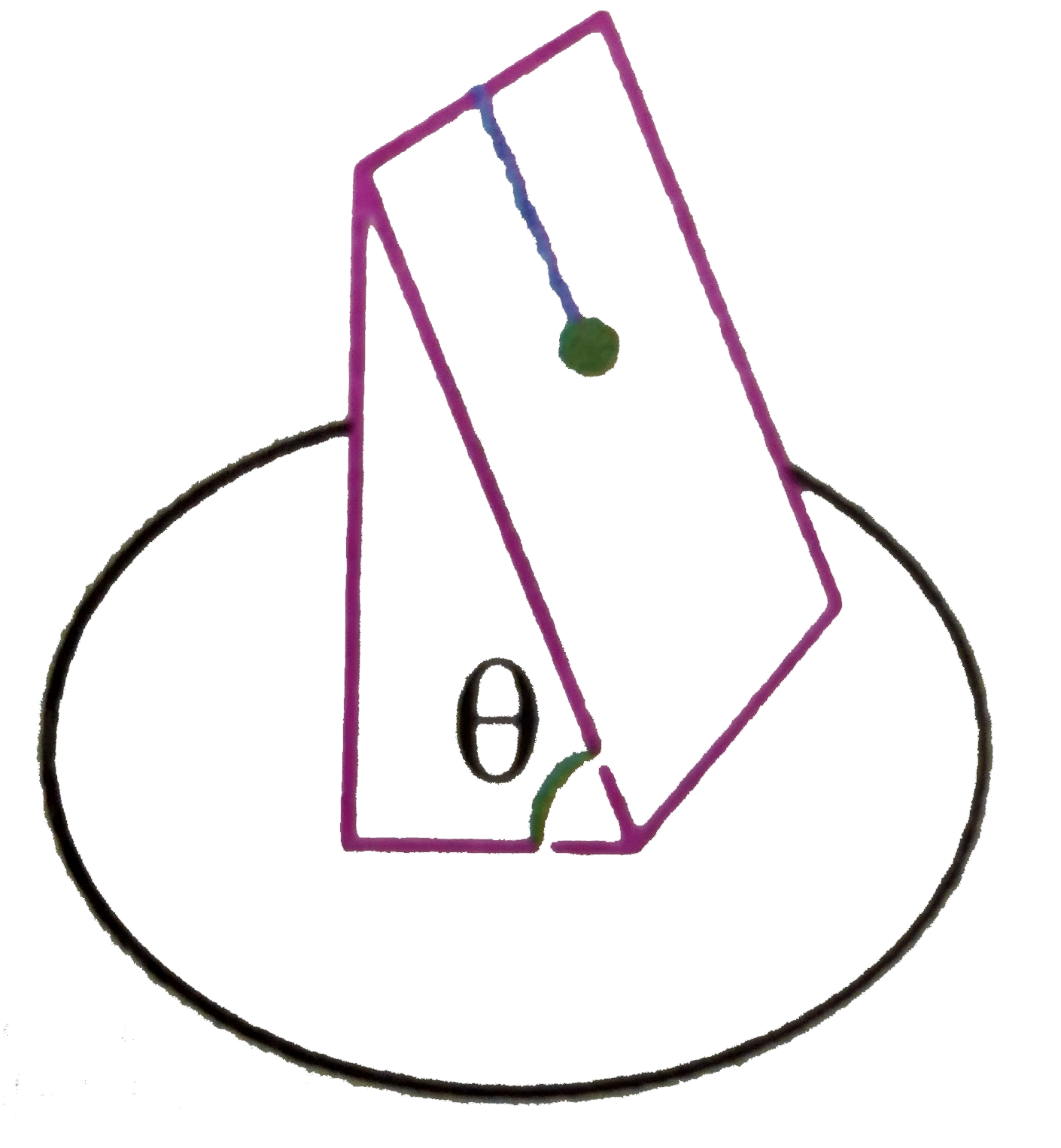A simple pendulum has time period T. A uniform rod, whose length is the same as that of the pendulum, undergoes small oscillations about its upper end. Its time period of oscillation will be -
<T
T
>T
may be (A), (B) or (C) depending on whether T is < equal to or >2seconds
The correct Answer is:A
To find the time period of a uniform rod undergoing small oscillations about its upper end, we can follow these steps:
Step 1: Understand the Problem
We need to find the time period of a uniform rod that is pivoted at one end and undergoes small oscillations. The length of the rod is the same as that of a simple pendulum, which has a known time period T.
Step 2: Recall the Time Period of a Simple Pendulum
The time period T of a simple pendulum is given by the formula:
T=2π√Lg
where L is the length of the pendulum and g is the acceleration due to gravity.
Step 3: Use the Formula for a Physical Pendulum
For a physical pendulum (like our uniform rod), the time period T1 is given by:
T1=2π√Imgh
where:
- I is the moment of inertia about the pivot point,
- m is the mass of the rod,
- h is the distance from the pivot to the center of mass.
Step 4: Calculate the Moment of Inertia
For a uniform rod of length L pivoted at one end, the moment of inertia I is:
I=13mL2
Step 5: Find the Center of Mass
The center of mass of a uniform rod is located at a distance of L2 from the pivot.
Step 6: Substitute Values into the Time Period Formula
Now substituting I and h into the time period formula:
T1=2π
⎷13mL2mg⋅L2
This simplifies to:
T1=2π
⎷13L2g⋅L2
T1=2π√2L3g
Step 7: Relate T1 to T
From the time period of the simple pendulum:
T=2π√Lg
We can express T1 in terms of T:
T1=√23T
Conclusion
Thus, the time period of the uniform rod undergoing small oscillations about its upper end is:
T1=√23T
We need to find the time period of a uniform rod that is pivoted at one end and undergoes small oscillations. The length of the rod is the same as that of a simple pendulum, which has a known time period T.
The time period T of a simple pendulum is given by the formula:
T=2π√Lg
where L is the length of the pendulum and g is the acceleration due to gravity.
For a physical pendulum (like our uniform rod), the time period T1 is given by:
T1=2π√Imgh
where:
- I is the moment of inertia about the pivot point,
- m is the mass of the rod,
- h is the distance from the pivot to the center of mass.
For a uniform rod of length L pivoted at one end, the moment of inertia I is:
I=13mL2
The center of mass of a uniform rod is located at a distance of L2 from the pivot.
Now substituting I and h into the time period formula:
T1=2π
⎷13mL2mg⋅L2
This simplifies to:
T1=2π
⎷13L2g⋅L2
T1=2π√2L3g
From the time period of the simple pendulum:
T=2π√Lg
We can express T1 in terms of T:
T1=√23T
Thus, the time period of the uniform rod undergoing small oscillations about its upper end is:
T1=√23T
Topper's Solved these Questions
- SIMPLE HARONIC MOTION BOOK - MOTIONCHAPTER - SIMPLE HARONIC MOTION EXERCISE - EXERCISE -2 (Leve-I) ( SECTION - G ) ( Compound pendulum / physicalpendulum, torsional pendulum )
5 Videos
- SIMPLE HARONIC MOTION BOOK - MOTIONCHAPTER - SIMPLE HARONIC MOTION EXERCISE - EXERCISE -2 (Leve-I) ( SECTION - H ) (Combination of two or more SHM)
1 Video
- SIMPLE HARONIC MOTION BOOK - MOTIONCHAPTER - SIMPLE HARONIC MOTION EXERCISE - EXERCISE -2 (Leve-I) ( SECTION - E,F ) ( Angu lar shm & s implependulum )
1 Video
- SIMPLE HARMONIC MOTIONBOOK - MOTIONCHAPTER - SIMPLE HARMONIC MOTIONEXERCISE - EXERCISE -3 Section - B Previous Year Problems | JEE MAIN
23 Videos
- SOUND WAVESBOOK - MOTIONCHAPTER - SOUND WAVESEXERCISE - Exercise - 3 (Section - B)
14 Videos
Similar Questions
Knowledge Check
A simple pendulum has a time period T. If the support and the pendulum fall freely, the time period will be
AinfinityBgreater than TCless than TDzeroA simple pendulum has time period T. Charges are now fixed at the point of suspension of the pendulum and on the bob. If the pendulum continues to oscillate, its time period will now be
Agreater than TBequal to TCless than TDeither (a) or (c) depending on whether the charges attract or repel each otherIn a simple pendulum the period of oscillation (T) is related to the length of the pendulum (L) as
AL/T=ConstantBL2/T2= ConstantCL/T2=ConstantDLT=Constant
A uniform rod of length 1.00 m is suspended through an end and is set into oscillation with small amplitude under gravity. Find the time period of oscillation.
View SolutionIf a pendulum is allowed to oscillate into jar containing water , its ,time period will
View SolutionA uniform rod of mass m and length l is suspended about its end. Time period of small angular oscillations is

View SolutionTime period of a simple pendulum of length L is T1 and time period of a uniform rod of the same length L pivoted about an end and oscillating in a vertical plane is T2. Amplitude of osciallations in both the cases is small. Then T1T2 is
View SolutionThe string of a simple pendulum replaced by a uniform rod of length L and mass M while the bob has a mass m. It is allowed to make small oscillation. Its time period is
View Solution
